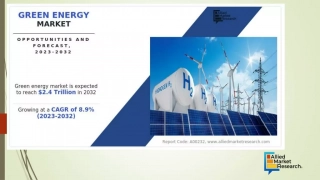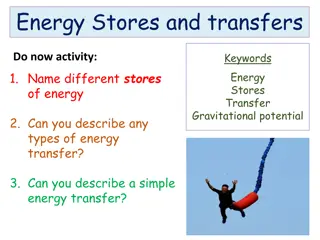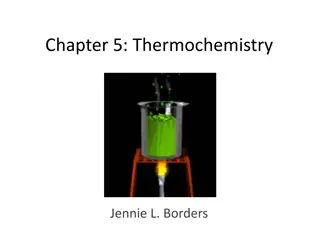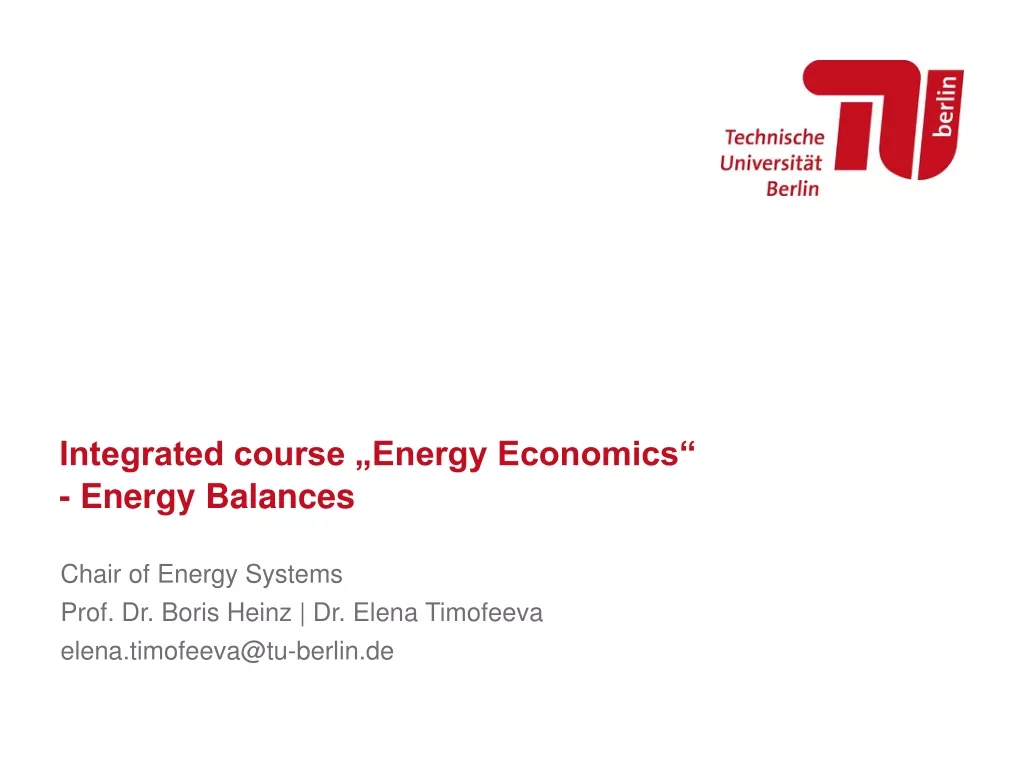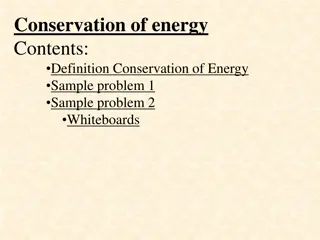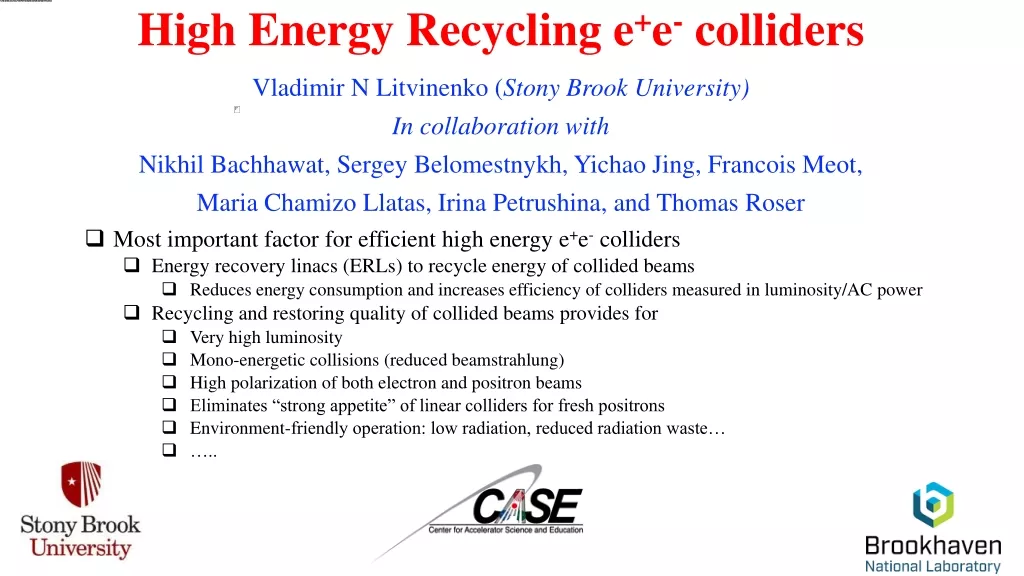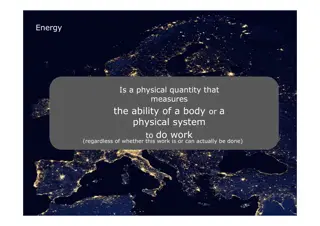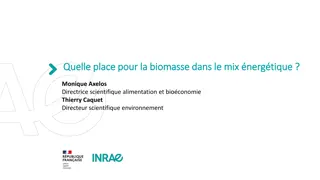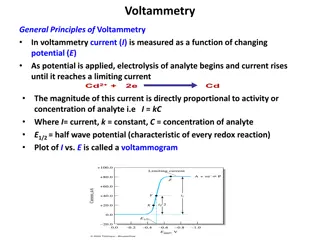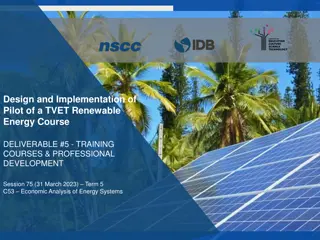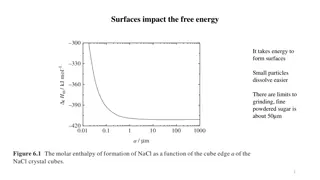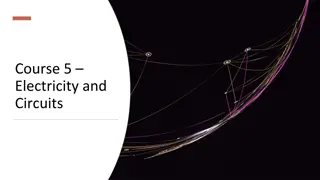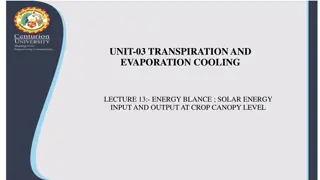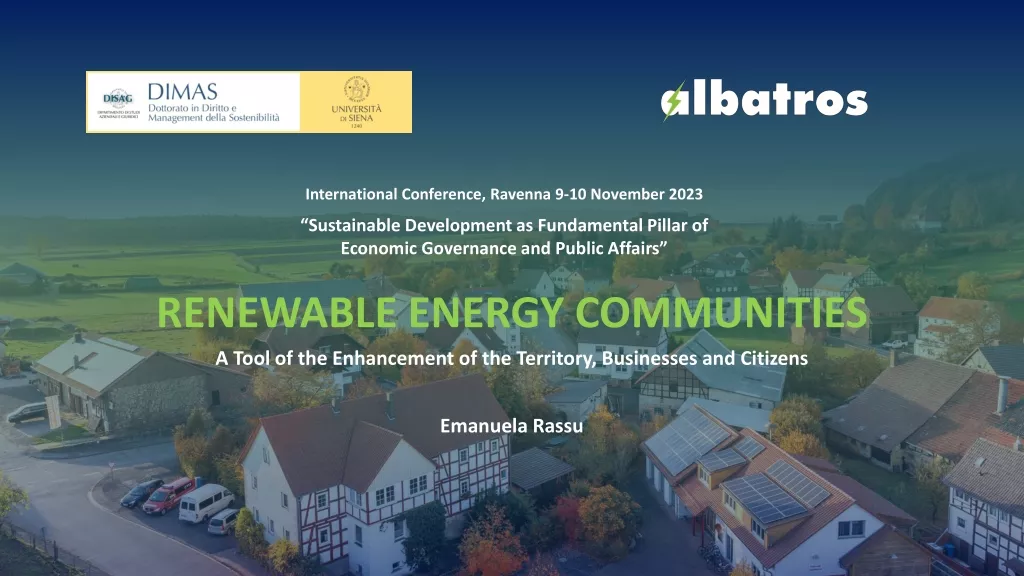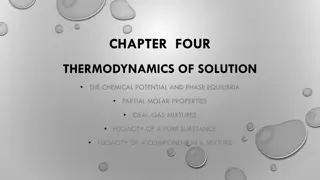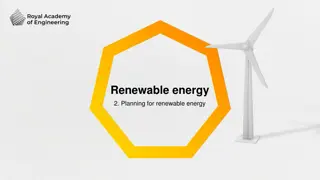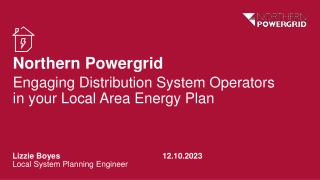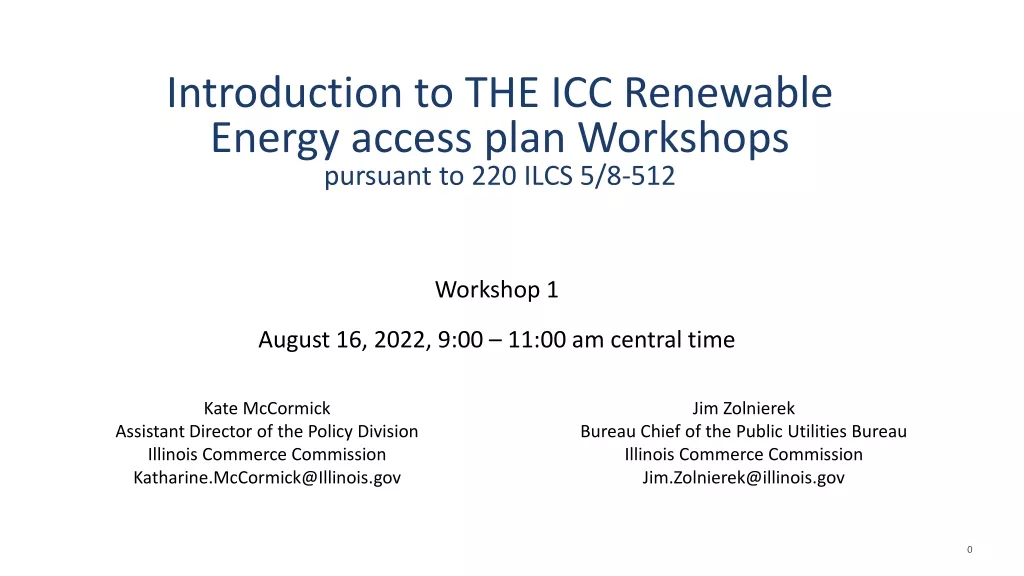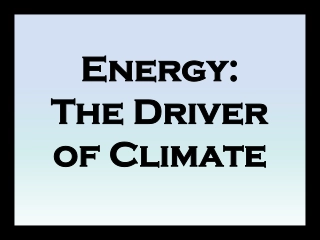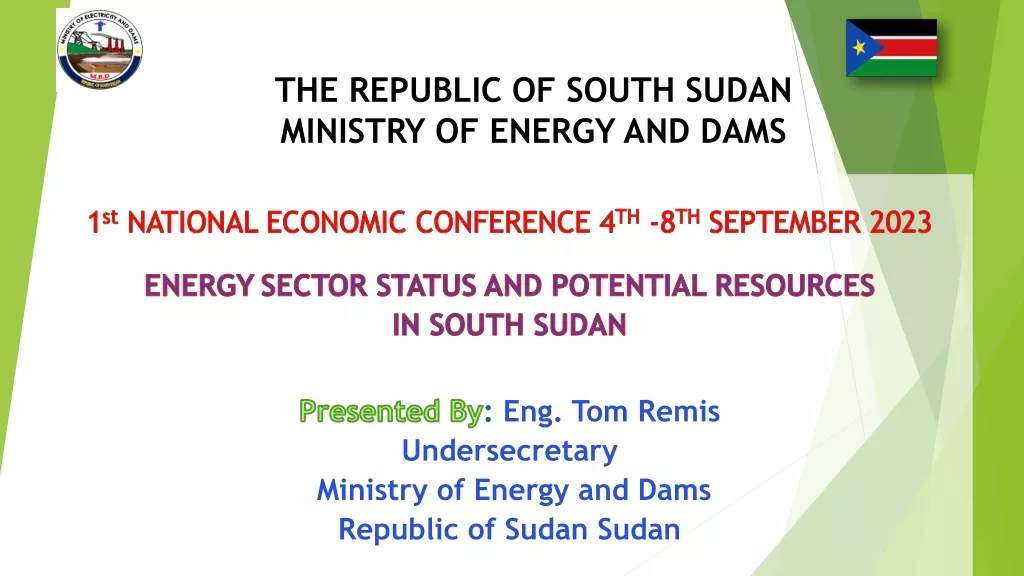Understanding Energy: Types, Potential, and Kinetic
Dive into the world of energy with a comprehensive guide covering the definition, types, and characteristics of gravitational, potential, and kinetic energy. Explore how energy is the driving force behind all work and movement, with examples and explanations provided for each energy type. Gain insights into how energy can be stored, transformed, and utilized in various forms, from gravitational potential energy in lifting objects to the kinetic energy of moving entities. Discover the fundamental concepts of energy through engaging visuals and practical scenarios.
Understanding Energy: Types, Potential, and Kinetic
PowerPoint presentation about 'Understanding Energy: Types, Potential, and Kinetic'. This presentation describes the topic on Dive into the world of energy with a comprehensive guide covering the definition, types, and characteristics of gravitational, potential, and kinetic energy. Explore how energy is the driving force behind all work and movement, with examples and explanations provided for each energy type. Gain insights into how energy can be stored, transformed, and utilized in various forms, from gravitational potential energy in lifting objects to the kinetic energy of moving entities. Discover the fundamental concepts of energy through engaging visuals and practical scenarios.. Download this presentation absolutely free.
Presentation Transcript
Energy Contents: Definition Types Gravitational Potential Whiteboards Kinetic Whiteboards
Energy - The ability to do work. (humor) Makes things go Neither created nor destroyed - moves around Mostly Nuclear
Types of Energy Potential - Energy of position. Stored energy. Examples: Gravitational, chemical, springs, nuclear Kinetic - Energy of motion. Examples: Baseballs, trains, cars, flywheels, bullets, hammers Thermal - Random potential and kinetic energy of molecules and atoms. Examples: Hot stuff ((( ))) (( ))
Gravitational Potential Energy Lifting a box of mass m: W = Fd= energy given F = mg, d = h W = Fd = mgh m h There are two ways to lift the object... PE = mgh PE - gravitational potential energy h - Height m - Mass g - 9.8 N/kg on Earth
Whiteboards: Gravitational Potential Energy 1 | 2 | 3
What is the potential energy of a 4.5 kg bowling ball, 13.5 cm above the ground? PE = mgh, h = .135 m PE = (4.5 kg)(9.8 N/kg)(.135 m) = 6.0 J 6.0 J
Toby Continued lifts a 75.0 kg box doing 1573 J of work. What is the change in height of the box? PE = mgh h = PE/(mg) = (1573 J)/(75 kg)/(9.80 N/kg) = 2.14 m 2.14 m
Colin Host lifts himself up 15 m doing 9555 J of work. What is his mass? PE = mgh m = PE/(gh) = (9555 J)/(9.8 N/kg)/(15 m) = 65 kg 65 kg
Kinetic Energy v F d m Speeding up a box of mass m with force F W = Fd = energy given F = ma W = (ma)d vf2 = vi2 + 2ax, d = v2/(2a) (if vi = 0) W = (ma)(v2/(2a)) = mv2/2 = 1/2mv2 KE = 1/2mv2 KE = 1/2mv2 KE - Kinetic energy v- velocity m - mass There are two ways to speed up the mass...
Whiteboards: Kinetic Energy 1 | 2 | 3
What is the kinetic energy of a 4.20 g bullet going 965 m/s? KE = 1/2mv2 = 1/2(.0042 kg)(965 m/s)2 = 1955.5725 (1960 J) 1960 J
A European swallow has 2.055 J of kinetic energy when it is flying at 14.23 m/s. What is its mass in grams? KE = 1/2mv2 m = 2 Ek/v2 = 2(2.055 J)/(14.23 m/s)2 = .020297 (20.29 g) 20.29 g
What speed must a .563 kg hammer move to store 34 J of energy? KE = 1/2mv2 v = (2 KE/m) = (2(34 J)/(.563 kg)) = 11 m/s 11 m/s


